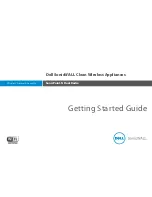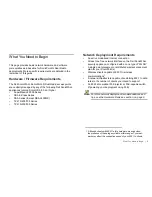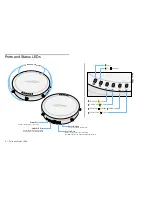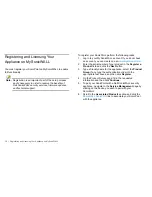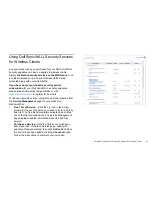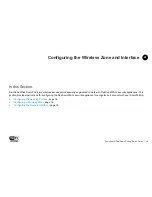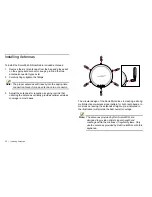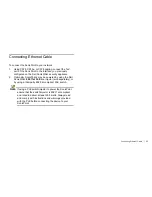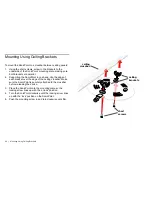
Access Points and Network Design |
9
Access Points and Network Design
Physical placement of an access point has a measurable effect
on who can and cannot access your wireless signal. The
following sections provide an overview of wireless access point
placement, signal strength, and signal direction in common
wireless deployment situations:
•
Hardware Decisions
- page 9
•
Solutions to RF Interference and Barriers
- page 10
Tip: For the latest SonicPoint wireless deployment
information from switching recommendations to
site survey, see the SonicWALL SonicPoint
Deployment Best Practices Guide at:
<
http://www.sonicwall.com/us/support.html
>
Hardware Decisions
The first decision in hardware is the access point. While access
point technology (802.11a/b/g/n) is one factor in determining
your placement, based on distance served and bandwidth
needed, taking note of other hardware-based factors is just as
important.
Some hardware factors to take into consideration:
•
Number of access points versus user density
– If too
many users are serviced by a single access point,
maximum transfer rates are reached and that point may
become a bottleneck for the whole system.
•
Bandwidth
– How much data is moving upstream and
downstream for a given type of user?
•
Ethernet cabling
– Where are you running the powered
Ethernet (PoE) cable to and how are you securing that
cable? Is your PoE switch able to power all access points?
•
Hubs / Switches / Security Appliance
– Your wireless
deployment has to tie back into your SonicWALL security
appliance and LAN resources at some point. What speed is
needed for your Ethernet connection to accommodate the
number of access points you are installing? Also consider
where your key networking devices are deployed and how
they will connect efficiently with your wireless appliances.
•
Ethernet connections for 802.11n
– In most cases,
802.11n wireless hardware requires more bandwidth than a
single (or even dual) 10/100 Ethernet connection can
handle. Gigabit Ethernet connectivity between the WLAN
and the LAN is required to take full advantage of 802.11n
speed.
•
Power Over Ethernet (PoE)
– Part of your wireless
network planning should include verifying that your PoE
equipment is 802.3at compliant, and that full power can be
supplied to each SonicPoint.
Содержание SonicPoint-N Dual Radio
Страница 15: ...14 Using Dell SonicWALL Security Services for Wireless Clients ...
Страница 21: ...20 Configuring the Network Interface ...
Страница 29: ...28 Onboard Help System ...
Страница 49: ...48 Copyright Notice ...
Страница 50: ......

